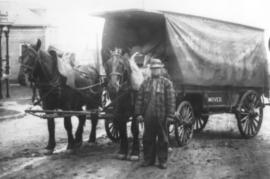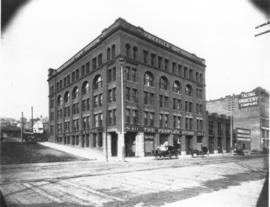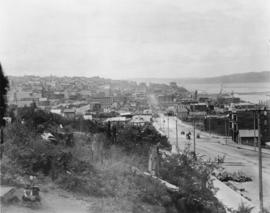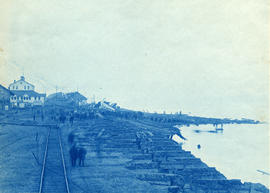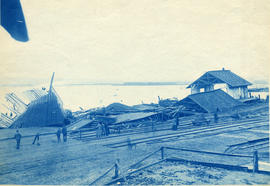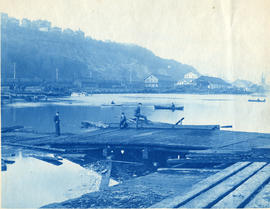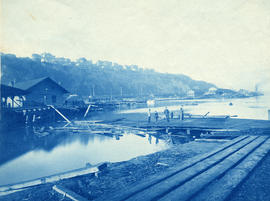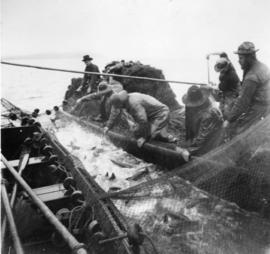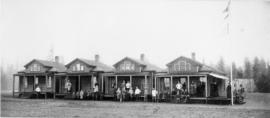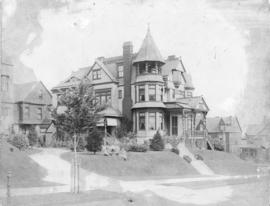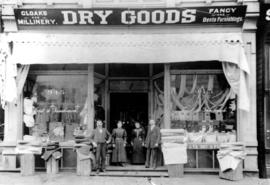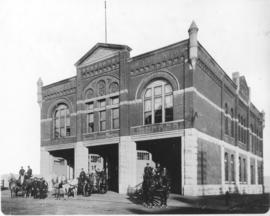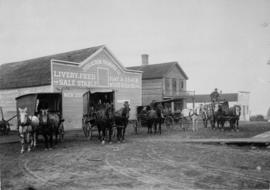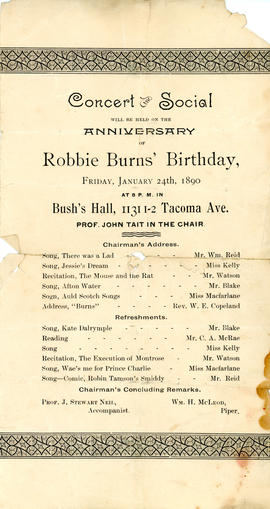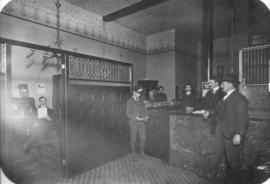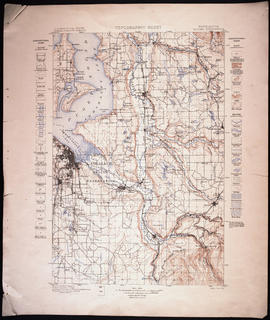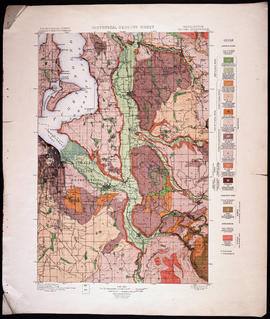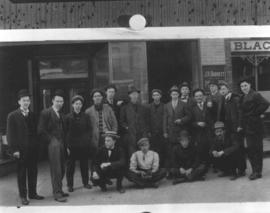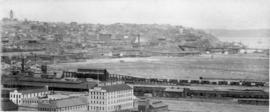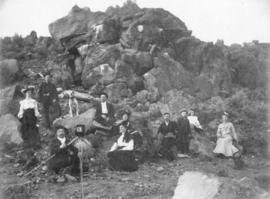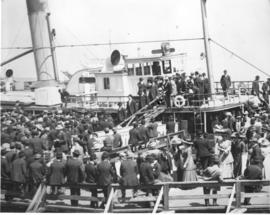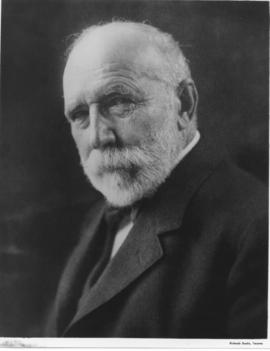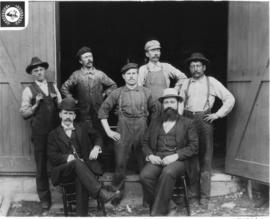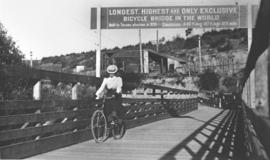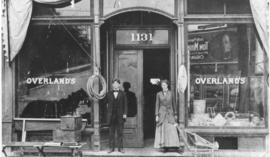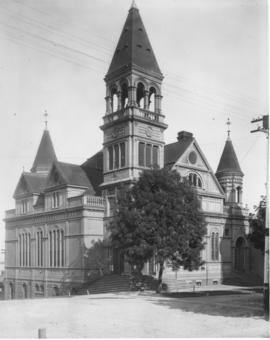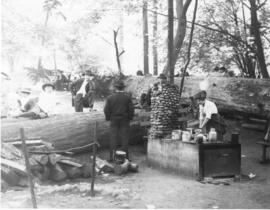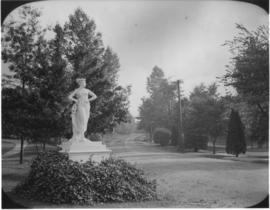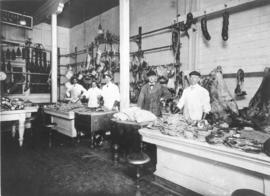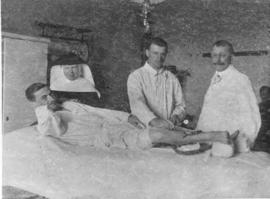- Item
- 1893
Part of Richards Studio Photographs
ca. 1893. Copy negative of a photograph, ca. 1893, of a Griffin Transfer Co. moving wagon. An unidentified man stands next to the horse-drawn wagon. The Griffin Transfer Co. is listed in the 1893-94 Polk Directory for Tacoma as owned by Griffin Brothers, Frederick and William. The office was at 1105 Pacific Ave. They maintained a yard and their residence at 813 J St. Company founder Frederick L. Griffin came west in 1889 to make his fortune. He was able to purchase a wagon and horse. He started out delivering fuel wood that he cut himself. After a few years, he obtained more wagons, horses and employees and branched out into a moving and hauling service. The company also dealt in coal, wood and ice. The company eventually grew into the Griffin Fuel Co., in the forties the oldest and largest dealer in fuel west of Chicago. The company remained in the hands of the Griffin family. TPL-7177
Moving & storage trade--Tacoma--1890-1900; Carts & wagons--Tacoma--1890-1900; Griffin Transfer Co. (Tacoma); Griffin Fuel Co. (Tacoma);
